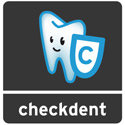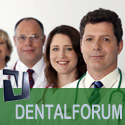Our body doesn’t like being put under pressure!
You know how it is when you press your thumb to your skin, the area turns white. This is because the blood vessels get squeezed together – leading to a temporary lack of blood, which makes the skin look pale. But it doesn’t matter if you only do this for a few seconds, after that blood circulation starts up again.
 Being confined to a bed for a long time can have the same kind of effect, but worse – tissue can die, because this is not just a few seconds of pressure from the thumb, but the body’s own weight acting over a much longer period, which causes bed sores – as shown in this picture.
Being confined to a bed for a long time can have the same kind of effect, but worse – tissue can die, because this is not just a few seconds of pressure from the thumb, but the body’s own weight acting over a much longer period, which causes bed sores – as shown in this picture.
Obviously, pressure is bad. Now, the teeth „hang“ in the gums on a system of connective tissue, the desmodont. This desmodont consists of a multitude of little fibers strung up between the root and the bone. The motion of chewing turns into a tugging motion, tugging at the bone, that is!
Teeth are not permanently set into the bone, they are „moveable“. If e.g. braces put pressure on a tooth, the desmodont can re-group, causing teeth to shift. This is how braces work, although our tongue and face muscles also put pressure on the teeth.
While the teeth tend to move together during adolescence (tertiary narrowing), as the lips and facial muscles continue to get stronger and exert more pressure, after about the age of 50 the opposite happens.
Lip pressure decreases, as does the tightness of the facial muscles (especially in the cheeks) and the tongue ends up exerting more pressure from inside the mouth. Moreover, recession of the gums, whether naturally or due to some illness (such as periodontosis) and the accompanying loss of bone, as well as osteoporosis, means that the teeth are no longer as securely anchored in the jaw.
The front teeth start to fan out!
All of these factors cause the front teeth to slowly start to fan out. The teeth push forward, causing gaps to form. The longer this goes on, the quicker teeth start to shift, until the patient finally notices this and goes to a dentist.
Aligners are very effective in treating this displacement!






